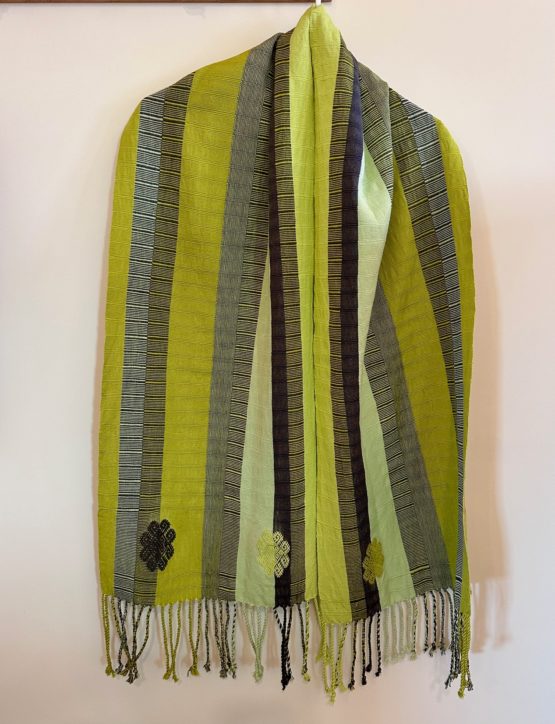It’s my habit, practice, custom, wish to leave Oaxaca city at 3:00 p.m. to arrive at the old cemetery (panteon) in Santa Cruz Xoxocotlan by 4:00 p.m. to celebrate Day of the Dead/Dia de los Muertos. I go there first and spend at least an hour and half in this sacred space. It’s just before the magic hour, before the light begins to fade at dusk. Getting there early has another advantage — a parking place close to the center of town.

The old cemetery is magical. It houses the remains of an old adobe church with crumbling walls that are held up by wood scaffolding. The fading stucco lintel can still be read, dated 1648 and adorned with cherubs and saints. It is roofless.


Yellow plastic do not cross–danger zone tape is a warning against entry. There is more of it this year. There are tombs inside. Last year a family invited us in to join them at an ancestor’s grave covered with flowers. This year, there was no one and I didn’t see any flowers. Perhaps it is now too dangerous to enter. I don’t know if there is a restoration plan.

Some of the grave stones are so weathered they are hard to read. Other tombs are marked by simple crosses and mounds of earth. You can tell who still has relatives in town who will pay attention to the dead. Some graves are empty of adornment. Others may have a token marigold plant so the souls know where to return.


We step carefully. Grave sites are adjoining and there is no clear path. If you aren’t careful, you can trip and fall. I stand against the concrete wall that holds this space to take it all in, look at the clear Oaxaca sky, think about life and death, and see an ancient Zapotec tradition unfold that pre-dates the Spanish conquest. I never tire of this. There are ancient bones here.

Just as in Teotitlan del Valle and San Pablo Villa de Mitla, locals welcome tourists because tourism is essential for Oaxaca’s economy. Those in larger villages accustomed to visitors for Muertos usually don’t mind having their photos taken but I’m always careful to ask. In the smaller villages, it’s still awkward since tourism is a relatively new phenomenon.


This year, however, what captivated me most was the changing, deteriorating structure of the old adobe, the arrival of the old and young together to tend to tradition, and the profusion of flowers.


As I rounded a corner I found a four-legged friend who was barking, guarding her own treasure hidden beneath the marble roof of an old monument that was now serving another purpose — shelter for new-born pups.


There is a profusion of homeless street dogs in Oaxaca. Most are never neutered and families usually don’t want females because they become pregnant. Duh! In some of the pueblos there is a growing movement toward education about animal protection/sterilization. But it is slow to take hold.

At every cemetery throughout Oaxaca, families bring in bundles of marigolds and purple cockscomb, vases, candles, oranges and bananas, brooms to sweep up the dried flowers from last year. Often they use wheelbarrows provided by the cemetery committee in each village. There is always a water cistern close by.


Don’t worry. You can buy candles, flowers and fruit right out on the street on your way to the cemetery. There are plenty of places to snack, grab a beer, and entertain yourself with amusements for children and adults, see the sand sculpture and an art exhibition. Wood-carvers from San Antonio Arrazola have a great annual display of alebrijes, too.

As we made our way through town to the new cemetery, we began to feel a different vibe. It was beginning look more like Halloween and an all-night party. It was only 7:00 p.m. The night was young and the young ones were getting ready.


Xoxo (Ho-Ho), as the town is called for short, has many wonderful murals on the Day of the Dead theme that are spray painted by street artists. This is a close-up of one below.

At the main cemetery, mezcal is offered freely to visitors by those gathered graveside. This burial ground is a wide open space with strolling mariachis and lots of flash photography.

We didn’t linger there long — long enough to get the taste of the wild and wonderful celebration to come later, and long enough to sip a mezcal with a family in tribute to their ancestors. Remember, the dead are only dead if no one remembers them and celebrates their lives.


Perhaps this will be my last Dia de los Muertos post this year. We shall see. I hope you have enjoyed the series, and may your departed loved ones continue to rest easy.

Tips to Participate: Bring several bundles of marigold flowers and offer some to local people to add to the tombs. You can also bring bananas, oranges and nuts. This is a very thoughtful gesture that demonstrates your desire to share in the ritual. Smile. Sit a while. Even if you don’t speak Spanish and smile and nod of acknowledgement goes a long way to friend-building.
Like this:
Like Loading...




































































Preparing for Day of the Dead, Dia de los Muertos
Day of the Dead is coming soon. Festivities in Oaxaca will begin in the next few days, and people are now gathering what they need for home altars to honor their deceased loved ones:
Dia de los Muertos Altar, San Pablo Villa de Mitla
See Day of the Dead 5-Day Photo Challenge at Facebook
Oaxaca street parades will start on October 30.
On October 31, the Xoxocotlan panteon (cemetery) will host locals and tourists who come from around the world to experience the reverie and revelry of Muertos. I like to start at the old cemetery around mid-afternoon to be present at the magic hour of sunset.
Pan de Muertos, Bread of the Dead
On November 1, there are many cemetery festivities, at San Pablo Villa de Mitla in the morning and in the evening at the Oaxaca city Panteon, and in San Augustin Etla.
On November 2, in Teotitlan del Valle, the low-key ceremonies of honoring the dead begin with a mid-afternoon meal at home to ensure the dead return to their graves with full bellies. The villagers then accompany the spirits to the the cemetery (around 6 p.m. ) and sit with them through the night to be certain they are cared for and rest in peace.
Teotitlan del Valle, Dia de los Muertos
On November 3, in San Antonino Castillo de Velasco, the flower growing village, holds their Day of the Dead celebrations after they have cut and sold cockscomb, marigolds, lilies and more to surrounding villages and city dwellers.
You might also want to add Santa Maria Atzompa to your itinerary.
Sand paintings, part of the tradition, Muertos
These are not created as tourist attractions but exist as part of ancient pre-Hispanic ritual in many parts of Mexico. Oaxaca has one of the most vibrant Day of the Dead celebrations.
Locals and seasoned Oaxaca travelers continue Slot Gacor the search for the undiscovered Day of the Dead celebration where few tourists descend. The farther from the city, the more likely this is to occur.
Still life with marigolds, Teotitlan del Valle market
I’m in North Carolina with my friend Hettie, and have with me photos of my parents and copal incense. I’ll start making my memory altar in the next few days. Meanwhile, my Teotitlan del Valle family will light incense and place marigolds at the gate to my home to welcome the spirits and guide them back under the shadow of Picacho.
See Day of the Dead 5-Day Photo Challenge at Facebook
Muertos altar, November 2, 2015, remembering my dad
After I built my altar last year, our 99-1/2 year-old mom took a downward turn and I left Oaxaca for California. She died on November 15, 2016. I return to California next week to join my family to lay the headstone on her grave just before the anniversary of her death, a ritual that is part of my religious tradition.
This year, my altar will hold them both. I will sit and honor their lives.
Dorothy Schafitz Beerstein, April 16, 2013
Like this:
12 Comments
Posted in Cultural Commentary, Oaxaca Mexico art and culture, Photography, Teotitlan del Valle, Travel & Tourism
Tagged altar, cemetery visits, customs, day of the dead, death, dia de los muertos, memory, Mexico, Oaxaca, photographs, Teotitlan del Valle, traditions, villages, Xoxocotlan